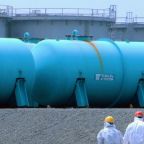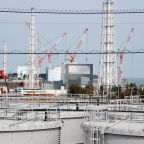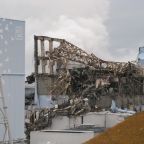Search results
What has happened in the field of nuclear energy last year? What developments can be observed internationally? As in the previous year, in 2022, a total of six new reactor units were connected to the grid. On the other hand, five units have been decommissioned, three of them in the UK alone. Accordingly, the installed net electrical capacity increased by 4,089 MW to 378,314 MW.

In addition to recovering the highly radioactive core melt from the affected reactor units, the disposal of enormous quantities of contaminated water represents the greatest challenge in the clean-up of the Fukushima Daiichi site. More than one million tonnes of it are stored in large tank areas on the plant site. While the space for new tanks will soon be exhausted at the site, the amount of water is increasing with each passing day.
In 2011, the most severe nuclear accident since Chernobyl occurred at the Fukushima Daiichi nuclear power plant site in Japan. The accident was classified at the highest level of the International Nuclear Event Scale (INES).
In 2011, the most severe nuclear accident since Chernobyl occurred at the Fukushima Daiichi nuclear power plant site in Japan. The accident was classified at the highest level of the International Nuclear Event Scale (INES).

Our GRS colleague Dr Michael Maqua has been performing the function of INES Officer for Germany on behalf of the Federal Ministry for the Environment for more than 13 years. INES stands for "International Nuclear and radiological Event Scale", a scale for the classification of nuclear events and accidents. The trained engineer followed the events around the nuclear accident at Fukushima from the GRS emergency centre. In this interview, he answers our questions about how he remembers this time.

GRS publishes new version of its AC² code package

Once again, 11 March marks the anniversary of the nuclear accident at the Fukushima-Daiichi nuclear power plant in Japan. Several thousand workers are still doing their jobs on the plant site every month - primarily to prepare the dismantling of the destroyed reactors. On the occasion of the anniversary, we look back on the main events and developments of the past year in this article.

Coordinated by the Nuclear Energy Agency of the Organisation for Economic Co-operation and Development (OECD/NEA), a new international research project has been launched to examine further the accident sequences at Fukushima Daiichi. Together with 21 institutions from 11 countries, Germany - represented by GRS - will also participate in the project "Analysis of Information from Reactor Buildings and Containment Vessels of Fukushima Daiichi NPS" (ARC-F). The three-year project is led by the Japan Atomic Energy Agency (JAEA).
Our dossiers are dedicated to topics that come into our focus again and again. Topics that we find exciting and/or important. Topics on which the media and interested citizens approach us. Topics that raise many questions which we can help to answer with our knowledge.
GRS has bundled its software for the simulation of incidents and accidents into one large code package: AC². AC² combines the calculation codes ATHLET, ATHLET-CD and COCOSYS and thus allows cross-system examination of nuclear protection goals.